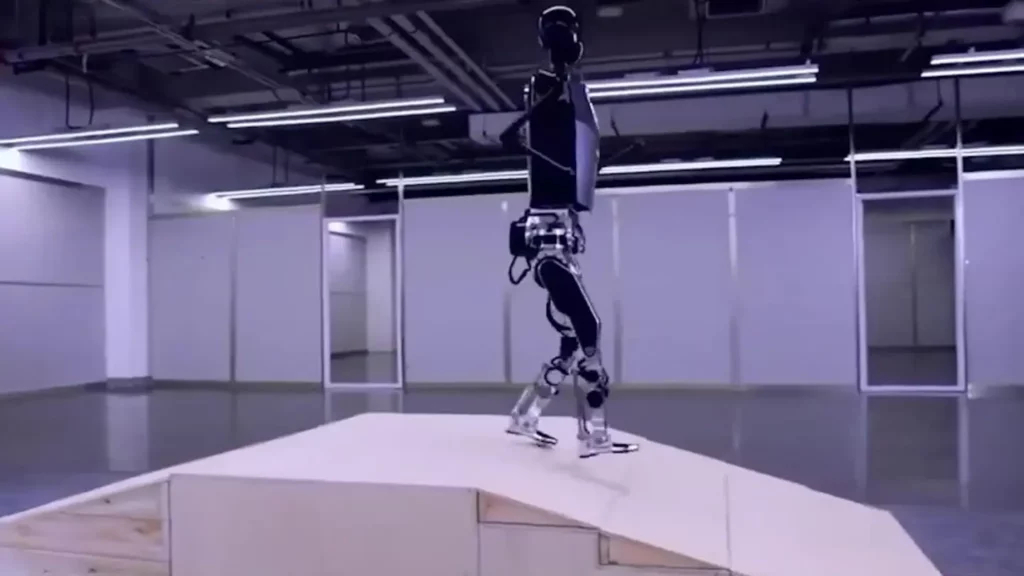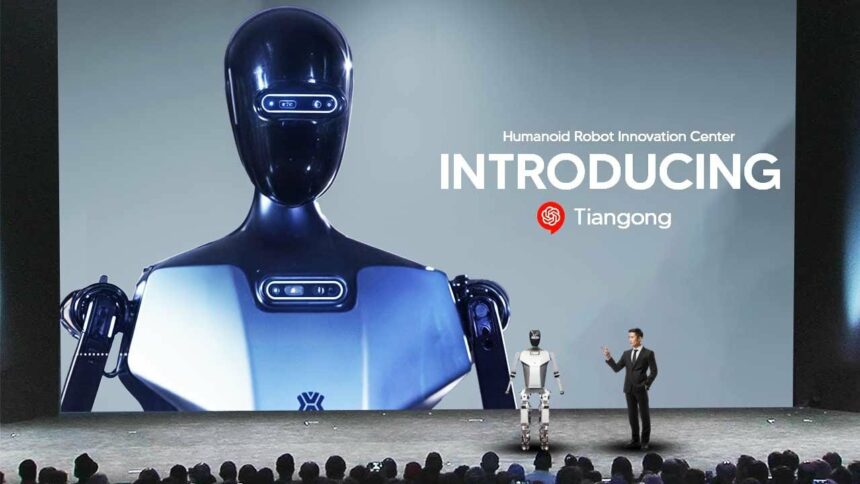Ready or not, the future will soon feature robots moving among us with the elegance and agility of humans, far removed from the bulky machines of science fiction.

Consider Tiangong, a full-size humanoid robot powered by electricity and recently showcased by the Beijing Humanoid Robot Innovation Center. With a stature comparable to an average human and a complex array of sensors and processors, Tiangong can jog steadily, navigate challenging terrains, and execute tasks with precision. This robot hints at a future where robots could serve as companions, assistants, and perhaps even friends.
Tiangong’s specifications
Standing 5 feet 4 inches tall and weighing 95 pounds, Tiangong can run at a steady 3.7 mph on electric power. It is equipped with advanced vision perception sensors and a high-precision inertial measurement unit capable of performing 550 trillion operations per second. These features, along with 3D vision and six-axis force sensors, allow Tiangong to move with remarkable fluidity.

Tiangong’s impressive debut
During its unveiling, Tiangong jogged in front of an astonished audience, demonstrating its capability to handle slopes and stairs with ease. A video presentation highlighted its abilities in walking, running, adjusting its gait, and climbing stairs in “blind mode,” relying solely on its sensors.
The global race in humanoid robotics
While Tiangong’s debut marks a significant milestone, it is not alone in the pursuit of advanced humanoid robotics. Boston Dynamics has introduced its all-electric Atlas robot, showcasing greater motion range and agility compared to earlier models, indicating intense competition in this arena.
Open-source innovation and commercial potential
Both Tiangong and Atlas are designed to be compatible with open-source software, promoting collaboration and innovation. This approach is expected to facilitate the widespread commercial use of humanoid robots in various fields, including home services and industrial applications.
China’s leap in technology at the Zhongguancun forum
The 2024 Zhongguancun Forum highlighted China’s rapid advancements in artificial intelligence. The Economic and Technological Development Area in Beijing has emerged as a centre for over a hundred robotics companies, creating a dynamic industrial ecosystem.

Envisioning a future with humanoid robots
As robots like Tiangong lead the way into the future, they challenge our preconceived ideas about robotics and prompt us to consider their potential roles in our lives. While their capabilities inspire admiration, there are also concerns about their integration into society. Will they remain helpful assistants, or evolve into something more complex? The answers are as intricate as the technology itself, but one thing is clear: The future is upon us, and these humanoid robots are ready to run alongside us.








